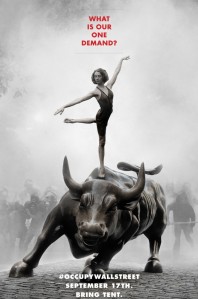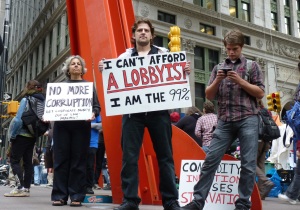The Engaging Event Series, #6
Much as we might like to control our day-to-day existence, the fact is that we live in an unscripted world, where we are constantly called upon to think on our feet–in other words, to improvise. Most of us usually associate “improv” with comedy and theater. Some have described it as “organized chaos” (not that different than life in general, when you think about it). But it turns out that Basic Improv Techniques can provide us with opportunities to encourage bonding, collaboration, brainstorming and creative problem-solving–pretty common objectives whenever you get a group of people together.
 This time around, I’m featuring a Guest Post by Jenise Fryatt, who’s one of my favorite bloggers about new ideas in event experience design. Among other things, Jenise creates content at Engage365 , Sound & Sight and EventProv.com. In this post, Jenise shares a few things she learned about using improv while attending the 2011 Applied Improvisation Network Conference in Baltimore last June. In Jenise’s own words:
This time around, I’m featuring a Guest Post by Jenise Fryatt, who’s one of my favorite bloggers about new ideas in event experience design. Among other things, Jenise creates content at Engage365 , Sound & Sight and EventProv.com. In this post, Jenise shares a few things she learned about using improv while attending the 2011 Applied Improvisation Network Conference in Baltimore last June. In Jenise’s own words:
Here are 5 things I learned about how improv skills, games and concepts can enhance and even transform events and meetings.
 1 – Help people connect and have fun
1 – Help people connect and have fun
Be it a small group session or a large general session with hundreds of people, there are improv-inspired games that can get people smiling, connecting, bonding and having fun. Sometimes they were as simple as a game called Back to Back that helps people get to know each other in a fun, musical chairs way, or the Diamond Dance, in which participants stand up next to their (theater style) seats and mimic the dancing of the person in front of them.
2 – Teach communication skills for better learning, networking
Improvisors are EXPERT communicators who are trained to use much more than words in connecting with others. They learn these skills through games like Zip,Zap,Zop; Red Ball, One Word Story and much more. Nearly every game that improvisors use is an exercise in effective communication. Practicing such games at a conference is a fun way to teach skills that will not only help attendees get more out of your event, but will help them in the situations they return to at home.
3 – Create your presentation with your attendees
What if you became comfortable with taking your presentation in a different direction than you had planned. What if you actually co-created it with your attendees?
Time after time sessions at the AIN conference followed this non-structure. It wasn’t about the presenter imparting knowledge alone. The attendees played a great role in what direction it took. In fact, I often got the feeling that the presenter learned as much from the attendees as the attendees learned from the presenter.
Improvisors learn to be very PRESENT oriented and because of this, they are much more aware of learning opportunities and are quick to seize the moment. So what if the original plan gets dumped? As long as attendees are finding more value, it’s worth it.
 4 – Work together to solve a problem
4 – Work together to solve a problem
Crowd-sourcing is a great way to get information and it’s used widely on the internet through surveys and polls. But an event where you have them all in one room presents an opportunity for doing this that won’t take days or weeks. You can do a lot in under a 1/2 hour.
The AIN conference organizers wanted to use the group to help create better branding. During a session of nearly 30 people, they had individuals take turns sharing one word he or she felt defined AIN. The words were written on flip charts.
After each person had shared two words, the group was divided into smaller groups of 4 people each. Each smaller group choose 6 of the previously chosen words. Each group reported what their words were and a dot was placed by each word. Then the words with the most dots were chosen to be used in crafting a branding statement about AIN.
I was impressed by how well this quick process got to the heart of who the AIN attendees are and what they care about.
5 – Practice dealing with difficult situations
One of the general sessions employed a game (invented at the conference) for applied improvisors to address obstacles they face in selling their services. All 100 participants chose stations labeled either AIN or the name of one of our ideal clients, i.e. event planner, business schools, etc.
Each client group invented a persona and identified some of the obstacles they face. Then each person in a client group (of about 3 or 4) took turns facing off with an AIN member who was selling applied improvisation services.
It was very illuminating. Some of the insights gained included; how important it is to understand and use the terminology of potential clients; establishing a relaxed, friendly rapport is extremely helpful and practicing such conversations can really help to address issues ahead of time. The whole exercise took less than 1/2 hour.
Being around people who have in common a love of “making stuff up” was energizing and inspiring beyond words. I hope to give you more of a feel of it in future posts. But something that I think all of us AIN conference attendees also share, is the conviction that improv isn’t magic. The tools that make us highly creative are tools that can be used successfully by anyone. AIN is an organization dedicated to spreading the word and I’m very proud to be associated with it.
(To view this post in its native habitat, follow this link to Eventprov.
Thanks, Jenise!)
How have you used or seen improv techniques applied to your own event experiences?
For 10,000 Bonus Points:
- For improv ideas, check out this laundry list of Improv Games (oddly enough, some of them double as drinking games…)
- Plus this from the venerable Whose Line Is It Anyway? TV show
- You might also be interested in this TED Talk by Stuart Brown, exploring the serious subject of Play:







